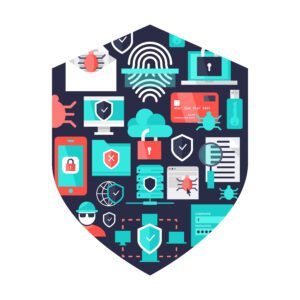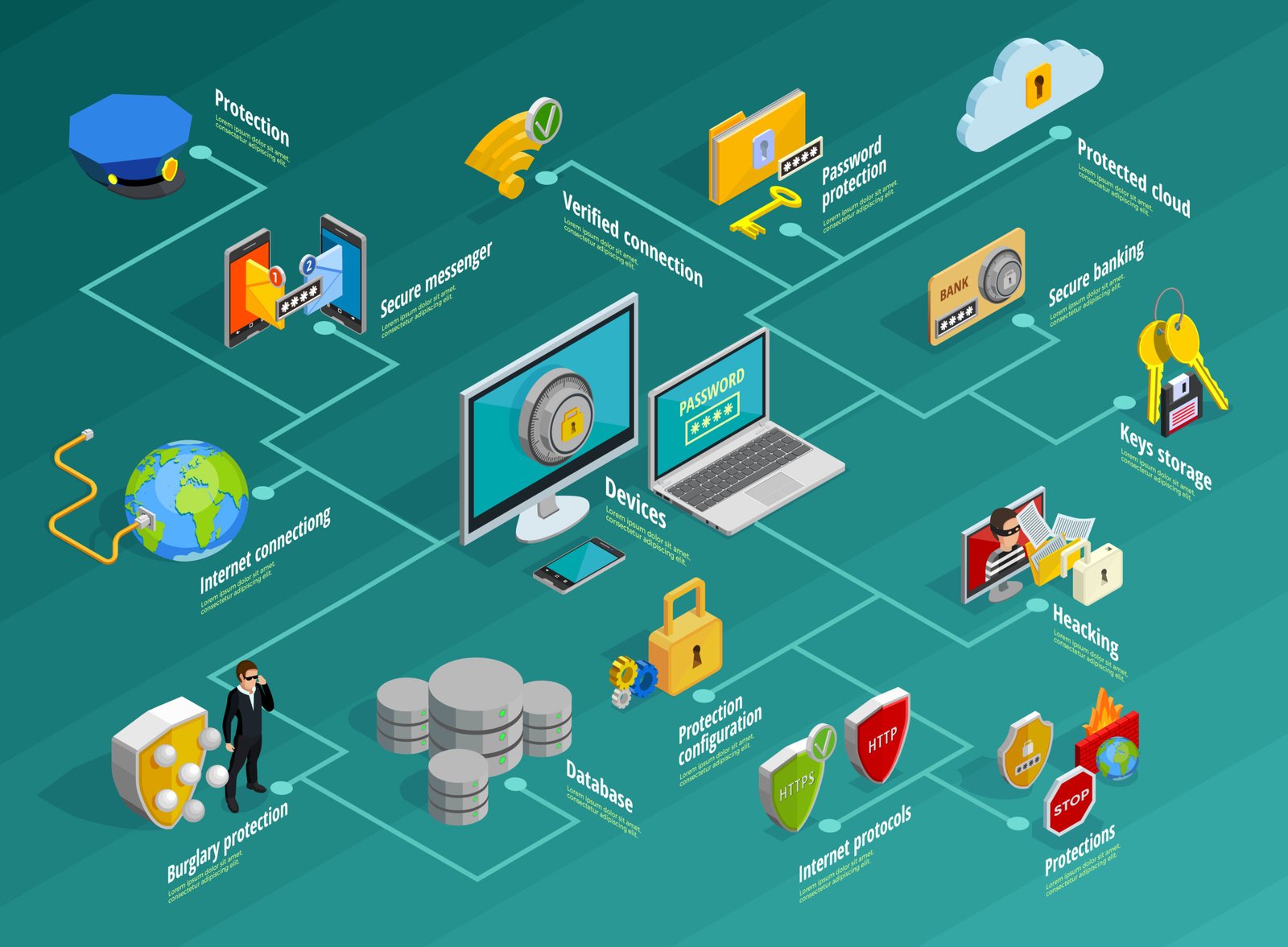What is Cyber Security Framework ?
A Cybersecurity Framework is a structured approach or set of guidelines designed to help organizations manage and mitigate cyber risks effectively. It provides a framework for identifying, protecting, detecting, responding to, and recovering from cybersecurity incidents. Essentially, it serves as a roadmap for organizations to assess their current cybersecurity posture, identify vulnerabilities, and implement appropriate controls to safeguard their systems, networks, and data from cyber threats.
7 Best Cybersecurity Frameworks That Help to Reduce Cyber Risk

In today’s world, where the prevalence of cyber threats is constantly evolving, safeguarding sensitive data and infrastructure has become paramount for individuals and organizations alike. The rising sophistication of cyberattacks necessitates a proactive approach towards cybersecurity, emphasizing the adoption of robust frameworks to mitigate risks effectively.
NIST Cybersecurity Framework
The National Institute of Standards and Technology (NIST) Cybersecurity Framework is a cornerstone for organizations seeking a structured approach to cybersecurity risk management. Comprising five core functions – Identify, Protect, Detect, Respond, and Recover – this framework offers a systematic methodology to assess, address, and monitor cybersecurity risks. By aligning cybersecurity activities with business objectives, organizations can enhance their ability to identify vulnerabilities, implement protective measures, and respond promptly to incidents.
ISO/IEC 27001
ISO/IEC 27001 is an internationally recognized standard that provides a framework for the design, implementation, management and continuous improvement of information security management systems (ISMS). By adhering to this framework, organizations can systematically evaluate risks, implement controls to mitigate threats, and ensure ongoing compliance with regulatory requirements. The comprehensive approach of ISO/IEC 27001 enables organizations to safeguard confidential information, enhance customer trust, and demonstrate commitment to information security best practices.
CIS Controls
The Center for Internet Security (CIS) Controls offer a prioritized set of actions designed to mitigate the most prevalent cyber threats. Divided into 20 actionable and globally recognized controls, this framework provides organizations with practical guidance to enhance cybersecurity posture effectively. By implementing CIS Controls, organizations can mitigate common attack vectors, reduce vulnerabilities, and establish a strong foundation for cybersecurity resilience.
COBIT
COBIT (Control Objectives for Information and Related Technologies) is a widely adopted framework for governance and management of enterprise IT. By aligning IT objectives with business goals, COBIT enables organizations to optimize IT processes, ensure regulatory compliance, and enhance overall governance. With a focus on risk management, COBIT empowers organizations to identify, prioritize, and address cybersecurity risks in alignment with business objectives, thereby fostering a culture of accountability and transparency.
CMMC (Cybersecurity Maturity Model Certification)
Developed by the U.S. Department of Defense (DoD), the Cybersecurity Maturity Model Certification (CMMC) is a unified standard designed to enhance the cybersecurity posture of the defense industrial base (DIB). By requiring contractors and subcontractors to demonstrate adherence to specific cybersecurity practices and processes, CMMC aims to safeguard sensitive defense information and reduce the risk of cyber incidents across the supply chain. The tiered approach of CMMC ensures that organizations adopt appropriate cybersecurity controls based on the sensitivity of the information they handle, thereby fostering a standardized approach to cybersecurity across the DIB.
PCI DSS (Payment Card Industry Data Security Standard)
For organizations involved in payment card processing, compliance with the Payment Card Industry Data Security Standard (PCI DSS) is imperative to protect cardholder data and maintain trust with customers. PCI DSS establishes a set of security requirements for organizations that handle credit card transactions, encompassing areas such as network security, access control, and data encryption. By adhering to PCI DSS compliance, organizations can mitigate the risk of data breaches, safeguard sensitive financial information, and uphold the integrity of the payment card ecosystem.
HIPAA (Health Insurance Portability and Accountability Act)
In the healthcare industry, compliance with the Health Insurance Portability and Accountability Act (HIPAA) is essential to protect the privacy and security of patient information. HIPAA establishes standards for the protection of sensitive health information, requiring healthcare organizations to implement safeguards to ensure confidentiality, integrity, and availability of patient data. By adhering to HIPAA regulations, healthcare providers can mitigate the risk of data breaches, maintain patient trust, and uphold compliance with legal requirements.
Measuring the Effectiveness of Your Chosen Framework
Measuring the effectiveness of a chosen cybersecurity framework is essential to ensure that it adequately addresses the organization’s cybersecurity risks and objectives. Some key metrics and methods for measuring effectiveness include:
- Compliance and Adherence: Assess the organization’s compliance with the requirements and guidelines outlined in the chosen framework. This can involve conducting regular audits, assessments, and reviews to ensure that cybersecurity controls are implemented effectively.
- Risk Reduction: Measure the reduction in cybersecurity risks achieved through the implementation of the framework. This can involve tracking metrics such as the number of security incidents, the severity of incidents, and the time to detect and respond to incidents.
- Incident Response Performance: Evaluate the organization’s incident response capabilities and performance in addressing cybersecurity incidents. This can involve conducting tabletop exercises, simulations, and post-incident reviews to identify areas for improvement.
- Security Awareness and Training: Assess the effectiveness of security awareness and training programs in educating employees about cybersecurity best practices and promoting a culture of security within the organization.
- Continuous Improvement: Continuously monitor and evaluate the effectiveness of the chosen framework and identify opportunities for improvement. This can involve soliciting feedback from stakeholders, conducting regular assessments, and updating policies and procedures to address emerging threats and vulnerabilities.
Frequently Asked Question for Cybersecurity Framework
What are the five elements of the NIST framework?
The NIST Cybersecurity Framework consists of five core functions:
- Identify: This function involves understanding the cybersecurity risks to systems, assets, data, and capabilities and establishing a foundation for managing those risks effectively.
- Protect: The Protect function focuses on implementing safeguards to ensure the delivery of critical services and the protection of assets, including data, systems, and networks.
- Detect: This function involves developing and implementing activities to identify the occurrence of cybersecurity events promptly.
- Respond: The Respond function focuses on taking action to mitigate the impact of detected cybersecurity incidents, including response planning, communication, and recovery activities.
- Recover: The Recover function involves restoring capabilities or services that were impaired due to a cybersecurity incident, including recovery planning, improvement, and communication activities.
What is the best Cybersecurity Framework?
The best Cybersecurity Framework depends on various factors such as organizational needs, industry requirements, and regulatory compliance standards. Some widely recognized frameworks include the NIST Cybersecurity Framework, ISO/IEC 27001, CIS Controls, COBIT, and CMMC. Each framework offers unique features and benefits, catering to different organizational contexts and objectives. Ultimately, the best framework is the one that aligns most closely with an organization’s specific cybersecurity goals and requirements.
Why are cybersecurity frameworks important?
Cybersecurity frameworks are essential because they offer organizations a systematic way to assess their current cybersecurity posture, identify vulnerabilities, and implement appropriate controls to safeguard their systems, networks, and data from cyber threats. They also help organizations align their cybersecurity efforts with business goals, regulatory requirements, and industry best practices.
